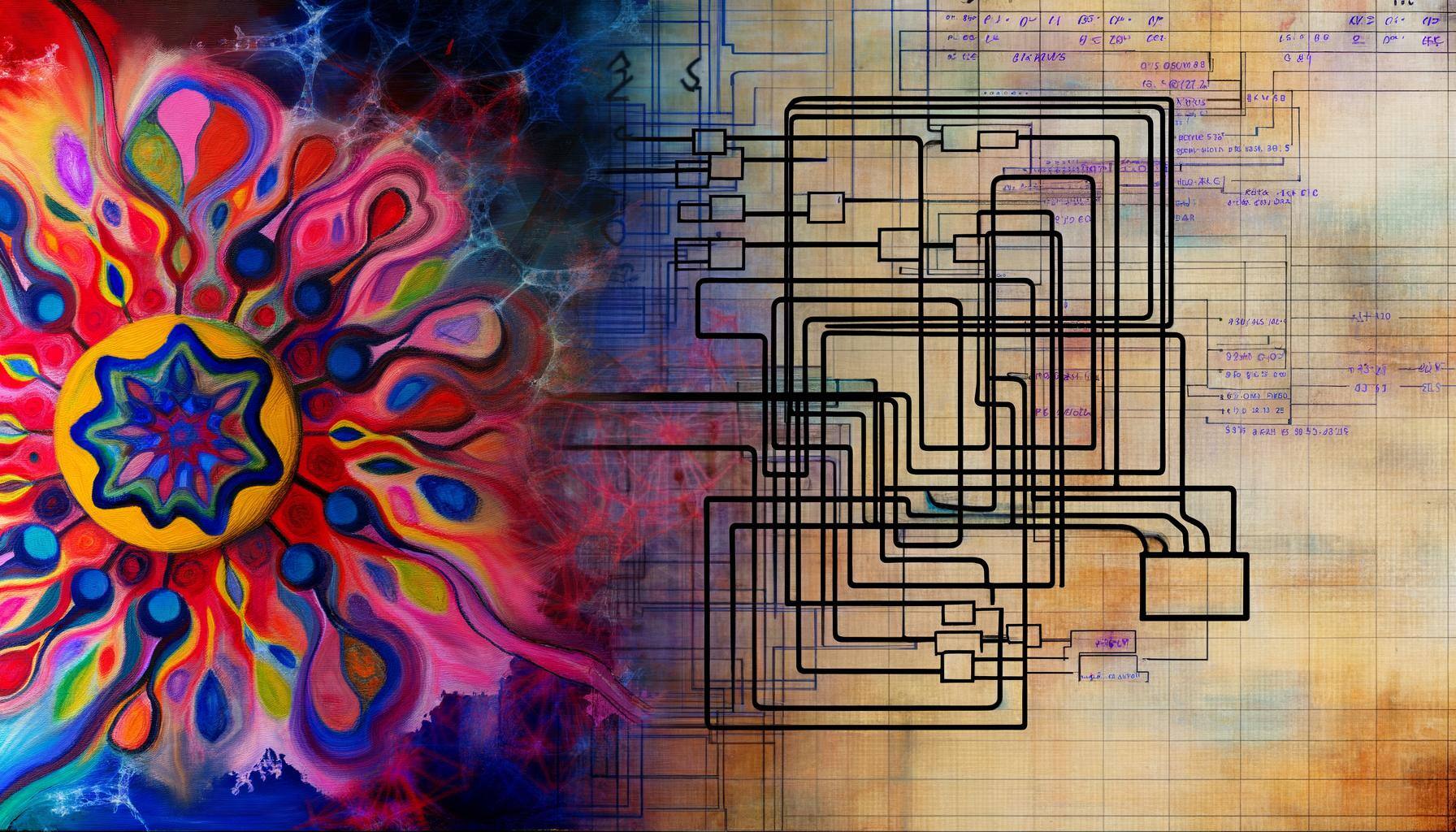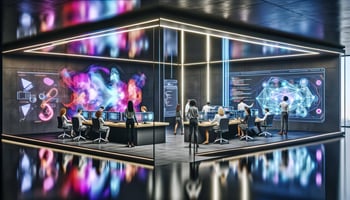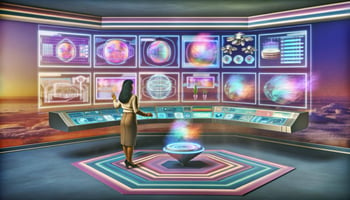In the dynamic world of Information Technology, the fusion of art and technology emerges as a...
IT Artistry Myth: A Critical Examination

In the digital age where technology and creativity often intersect, the discussion around Information Technology (IT) as an art form has gained traction. However, a contrarian viewpoint challenges the notion of IT's artistic merit, arguing that its essence lies more in logic and technical prowess than in creative expression. This post dives into this debate, exploring the strengths and weaknesses of considering IT as an art form and why some professionals passionately defend its creative integrity.
Alqubit: IT as an Expression of Art
Unveiling the IT vs Art Debate
The debate between IT as a form of art versus a strictly technical discipline is not new. Proponents of IT as an art form argue that like art, IT requires creativity, innovation, and a deep understanding of both form and function. Critics, however, contend that IT's core is fundamentally systematic, governed by rules and logic that leave little room for the fluidity and subjectivity characteristic of art. This contrarian perspective emphasizes the analytical nature of IT work, which relies on precision, predictability, and a methodology that can be replicated, traits not typically associated with artistic endeavors.
The Systematic Backbone of IT Work
IT's foundation is built on systems, algorithms, and codes — elements that operate within a framework of predefined rules. This systematic backbone ensures that IT systems are reliable, secure, and efficient. From this viewpoint, the artistry claim seems misplaced. IT professionals spend much of their time troubleshooting, optimizing, and refining systems to meet specific criteria, focusing on functionality and user experience rather than expressive or aesthetic considerations. This analytical approach to problem-solving underscores the discipline and rigor required in IT, contrasting with the free-flowing nature of artistic creation.
Artistic Fluidity vs. Technological Precision
Art is often celebrated for its ability to transcend boundaries, challenge conventions, and express complex emotions and ideas without the need for precise outcomes. In contrast, IT work is bound by the need for accuracy, consistency, and predictability. The development of software, the design of networks, and the management of data all require a level of precision that leaves little to chance. This necessity for technological precision highlights a fundamental difference between IT and traditional art forms, where the value of the outcome often lies in its interpretation and impact rather than its adherence to specific functional objectives.
Creativity in Coding: Myth or Reality?
While coding is sometimes romanticized as a form of digital artistry, the reality is that it is a skill deeply rooted in logic and problem-solving. Coders must adhere to syntactical rules and understand complex algorithms to create functional software. While there is a creative aspect to developing innovative solutions and optimizing code, this creativity is constrained by the limits of the programming languages and the need for the code to perform specific tasks. This blend of creativity within a structured framework challenges the notion of coding as pure art, suggesting instead that it is a craft that balances creative problem-solving with technical expertise.
The Romanticization of Technical Professions
The romanticization of IT and other technical professions as forms of art may stem from a desire to elevate the perceived value of these fields, recognizing the intellectual and creative labor involved. However, this perspective can overlook the intrinsic value of IT work as a critical component of modern society, independent of its classification as an art form. By focusing on the artistry of IT, there is a risk of undervaluing the technical skills, precision, and analytical thinking that are the hallmarks of the profession.
Defending the Artistic Integrity of IT
Despite these arguments, many IT professionals and enthusiasts continue to defend the artistic integrity of their field. They argue that the process of creating software, designing systems, and even troubleshooting can be deeply creative, requiring not only technical skills but also imagination and vision. This viewpoint emphasizes the role of innovation and the capacity of IT to transform ideas into tangible, functional realities, drawing parallels with the creative process in art. The proponents of this perspective highlight the importance of recognizing the creative challenges and achievements within IT, arguing that this recognition fosters a more holistic appreciation of the field.
The Undervalued Role of Creativity in Technology
One of the weaknesses of the contrarian stance is that it may undervalue the role of creativity in technology. Innovation in IT often arises from thinking outside the box, challenging existing paradigms, and envisioning new possibilities. This type of creative thinking is crucial for technological advancement and is reminiscent of the creative process in art. Acknowledging the creative aspects of IT does not diminish its technical rigor but rather complements it, offering a more nuanced understanding of the field.
Reconciling Technical Mastery with Creative Expression
The debate over IT's artistic merit reflects broader questions about the nature of creativity and the intersection of technology and art. While IT work is undeniably systematic and bound by technical constraints, it also encompasses elements of creativity and innovation that defy simple categorization. Perhaps the most productive approach is not to draw firm boundaries between art and technology but to recognize and celebrate the ways in which they inform and enhance each other. By acknowledging the creative challenges and achievements in IT alongside its technical excellence, we can foster a richer appreciation of the field and its contributions to society.
In conclusion, while the contrarian viewpoint highlights valid distinctions between the systematic nature of IT work and the fluidity of art, it also opens up a dialogue about the complexity of creative expression in the digital age. By examining the strengths and weaknesses of this perspective, we gain a deeper understanding of both the limitations and the possibilities inherent in the intersection of IT and art.



